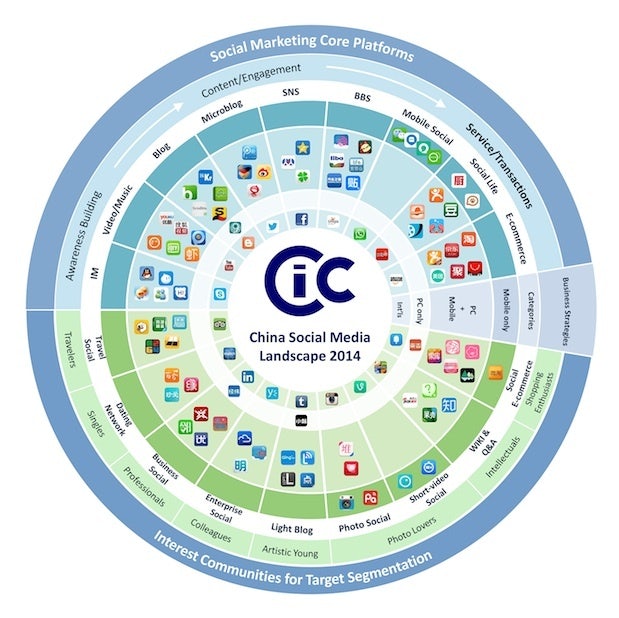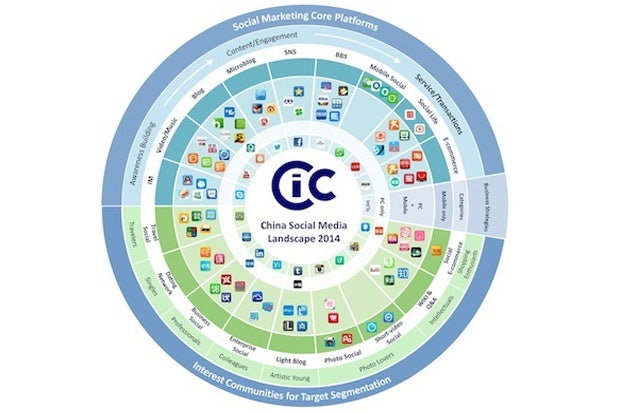
CIC explains the messy multitude of China's social media platforms. (CIC)
When people in the Western world talk about e-commerce and social networking, they usually think about Amazon and Facebook. But where China is involved, the game is totally different. With close to 100 different social media platforms popular in China right now, understanding China’s social media landscape can be very confusing.
To clear that haze, CIC, one of China’s social intelligence providers, recently released their sixth infographic report since 2008, titled “CIC 2014 China Social Media Landscape.”
What is hot for one sector of the industry may not be for another, and simply tackling the Chinese market with the most popular social media platform might not guarantee success. CIC argues that utilizing the platform best optimized for purpose, target-audience, and content value makes better headway than blindly picking the “hottest” option.
When CIC first started assessing China’s social media landscape six years ago, platforms were merely organized into categories such as “social networking sites (SNS)”, “e-commerce”, or “micro-blogging”. However, over the years, they realized that some categories were better suited for one purpose than another, and that it would be useful to group these categories under business strategies.
Thus, CIC divided their categories into two main strategies: “social marketing core platforms”, time-absorbing media with a very large reach, and “interest communities for target segmentation”, social media with smaller user bases but which have niche communities, such as for dating or for professional networking.
By doing so, companies can easily discern that platforms such as Youku, a video-sharing site, is more suited for broad awareness-building than Weibo, a micro-blogging platform CIC has classified as more for “content/engagement” purposes, or even Meituan, an e-commerce site for “service/transaction” purposes. Companies can also easily tell which interest-led social media networks exist, such as for dating, travel, photo-sharing, or even Wikis.
Not only that, but over the years, the rapid rise of mobile internet means that some social media platforms are available on cell phones, the PC, or both. This year, CIC has reflected that rise by further segregating China’s social media platforms into their respective accessibilities.
It will be interesting to see how social media in China will continue to develop. With the rise of accessibility-exclusive platforms developing their own unique marketing values and strategies, and the quick changes social media platforms adopt to adapt to changing consumer demands, those wishing to stay in the loop will certainly have their work cut out for them.
